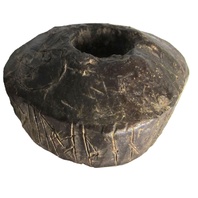
Viking Objects
Saltfleetby Spindle Whorl (LIN-D92A22)
A lead spindle whorl found at Saltfleetby St Clement, Lincolnshire, and inscribed with runes. The dating of the spindle whorl is uncertain, and dates in the late Viking Age, the early eleventh century, or even the twelfth century, have been suggested. The spindle whorl is inscribed with Scandinavian runes that appear to mention the Norse gods Odin and (possibly) Heimdall. The object is likely to have been produced locally, though the runes demonstrate contacts with the Scandinavian world of the time, perhaps especially Norway. John Hines has suggested the translation ‘Óðinn and Heimdallr and Þalfa, they are helping you, Úlfljót, and …’. For further discussion of the text, see the open-access article by Jesch referenced below. For more on runes, see our Runes page.
Read More
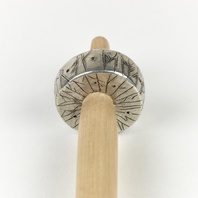
Viking Objects
Reproduction Drop Spindle
A reproduction of a lead alloy spindle whorl with a runic inscription, modelled on a find from Saltfleetby St Clement, Lincolnshire. Fibres were spun into thread using a drop-spindle of which the whorls were made of bone, ceramic, lead, or stone and acted as flywheels during spinning.
Read More
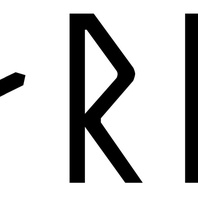
Viking Names
Gerd
The name Gerðr was found in Iceland in the tenth century, but only possibly found in Norway in place-names. It is also found in one Danish place-name. It is is the first element in the place-name Garriston, North Yorkshire and in Getheston, a field name, in Monk Bretton, West Yorkshire. Gerðr is from the Primitive Scandinavian garðiōʀ. Perhaps it is the female equivalent of the Old Norse male personal name Garðr from Old Norse garðr ‘yard, enclosure’, but used in the older sense of ‘protection’. Gerðr occasionally appears as a form of the male personal name, Giarðarr. Many female names, such as Þorgerðr are formed with -gerðr as the second element. Gerðr also appears in Old Norse mythology as the name of the giantess with whom the god Freyr falls in love.
Read More
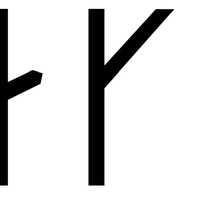
Viking Names
Ragni
Ragni is a short form of names in Ragn-, related to Old Norse regin, genitive plural ragna, ‘ruling powers, the gods’. The personal name element probably has the sense of ‘advice’, but it may indicate ‘the gods’, as it does in Ragnarök, the name of the apocalypse in Old Norse mythology. A few late instances of the personal name are recorded in West Scandinavia, it is recorded in several runic inscriptions in Sweden. Also, Ragni is the first element of the place-name Ragnall, Nottinghamshire.
Read More
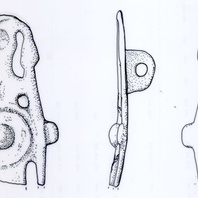
Viking Objects
Pendant (LEIC-C58A13)
This copper-alloy pendant depicts an individual holding a shield and a sword. Similar designs have been seen in pendants from southern Scandinavia which are generally identified as valkyries, though they could represent other mythological figures. The closest parallel in England is an example from Wickham Market, Suffolk. .
Read More
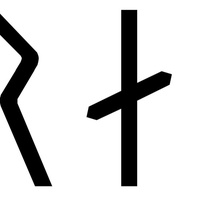
Viking Names
Grani
The male personal name Grani, or possibly Gráni, is the first element of the place-name Granby, Nottinghamshire. The name occurs sporadically in saga-literature and also appears on the rune-stone from Berezan’ in southern Ukraine, erected by visiting Swedes in the eleventh century. It is also the name of the horse of the legendary hero Sigurd the Serpent-Slayer. If the name, whether of the horse or as a male name, is Grani, then it is related to the Old Norse word grǫn, referring to the ‘upper lip’ or ‘moustache’, and can be compared to other original bynames like Skeggi from skegg ‘beard’. Alternatively, it might be related to the adjective grár ‘grey’ or verb grána ‘to grow grey’, and would similarly have originally been a descriptive byname. In Granby, a document from c. 1200 refers to Granehou, a mound (Old Norse haugr) possibly named after the same man who gave his name to the village.
Read More
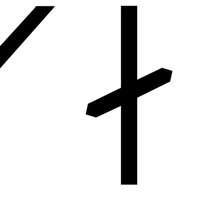
Viking Names
Skalli
Skalli an original byname meaning ‘bald-head’. It is recorded in Western Scandinavian mythology as the name of a giant, it is fairly common as a byname in Norway and Iceland. A few instances are recorded in runic inscriptions in Sweden and in Danish place-names. Skalli is the first element in Scawby, Lincolnshire, as well in several other place-names in Lincolnshire and Yorkshire
Read More
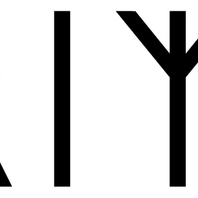
Viking Names
Grim
The Old Norse male name Grímr is common across the Scandinavian world, including the Viking diaspora. It is very common in English place-names, though some of these might rather represent an Old English mythological name associated with Woden, and there are other possibilities. For this reason, not all the hybrid names traditionally referred to as ‘Grimston hybrids’ necessarily have an Old Norse element and it is better to refer to them as Toton-hybrids. However, where the name is compounded with an Old Norse element such as -by (as in Grimsby), it is likely that it represents the Old Norse personal name. In Old Norse, Grímr is related to the word gríma ‘mask’ and mythological texts relate that is one of the god Óðinn’s by-names, deriving from his penchant for travelling about in disguise. It is also a common element in compound personal names, such as Þorgrímr. The father of the eponymous hero of Egils saga was called Skalla-Grímr ‘Bald-Grim’.
Read More

Viking Names
Beli
Beli is probably an original byname derived from the Old Norse verb belja ‘to bellow, roar’. No certain instance is recorded in Viking Age Scandinavia, though it is recorded as a giant-name in Old Norse mythological texts. Beli is suggested as the first element in Beelsby, Lincolnshire.
